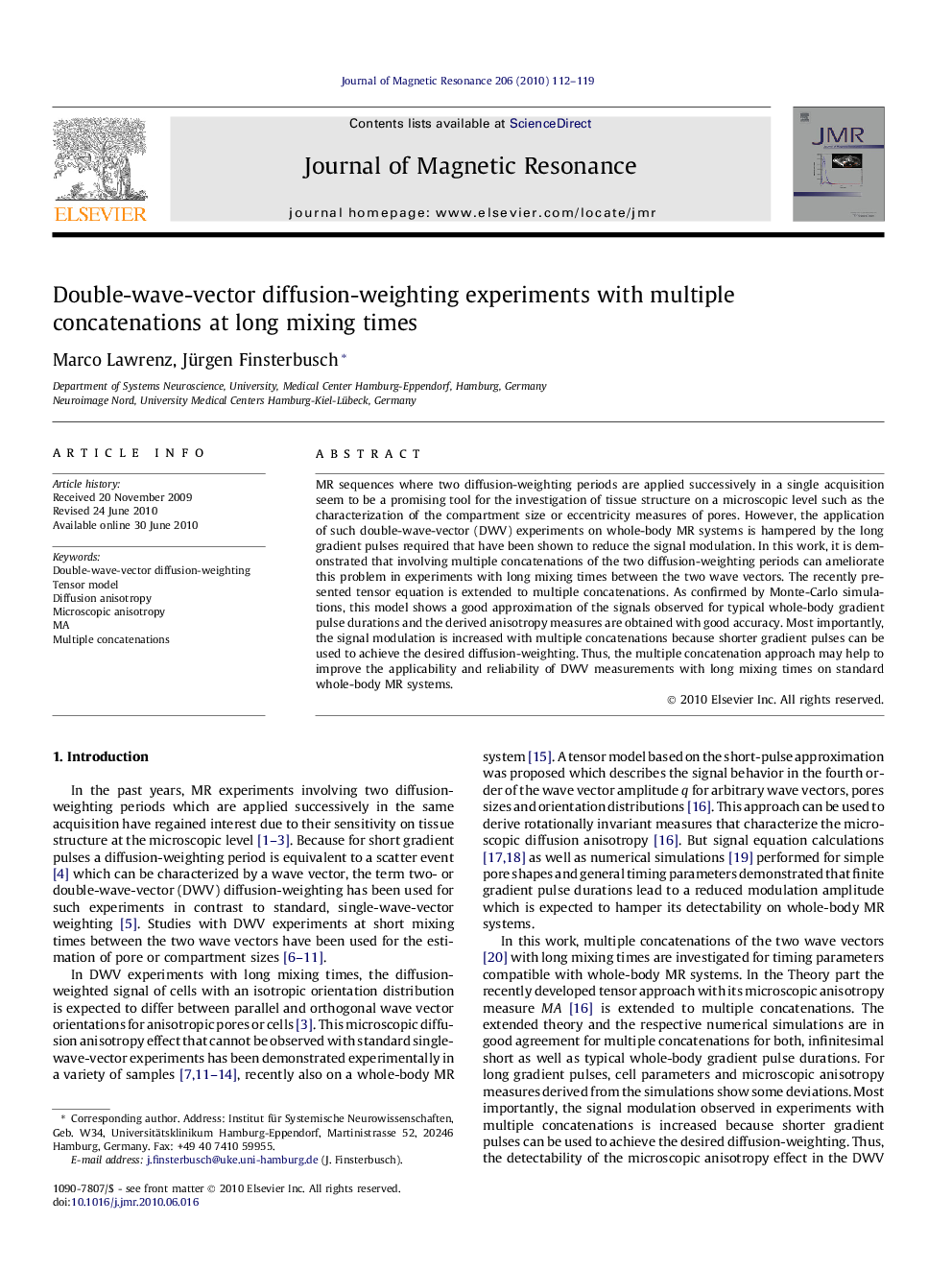| Article ID | Journal | Published Year | Pages | File Type |
|---|---|---|---|---|
| 5406601 | Journal of Magnetic Resonance | 2010 | 8 Pages |
MR sequences where two diffusion-weighting periods are applied successively in a single acquisition seem to be a promising tool for the investigation of tissue structure on a microscopic level such as the characterization of the compartment size or eccentricity measures of pores. However, the application of such double-wave-vector (DWV) experiments on whole-body MR systems is hampered by the long gradient pulses required that have been shown to reduce the signal modulation. In this work, it is demonstrated that involving multiple concatenations of the two diffusion-weighting periods can ameliorate this problem in experiments with long mixing times between the two wave vectors. The recently presented tensor equation is extended to multiple concatenations. As confirmed by Monte-Carlo simulations, this model shows a good approximation of the signals observed for typical whole-body gradient pulse durations and the derived anisotropy measures are obtained with good accuracy. Most importantly, the signal modulation is increased with multiple concatenations because shorter gradient pulses can be used to achieve the desired diffusion-weighting. Thus, the multiple concatenation approach may help to improve the applicability and reliability of DWV measurements with long mixing times on standard whole-body MR systems.
